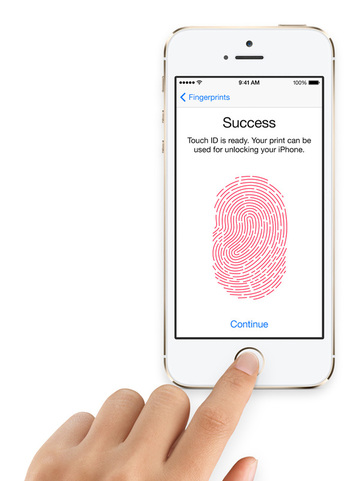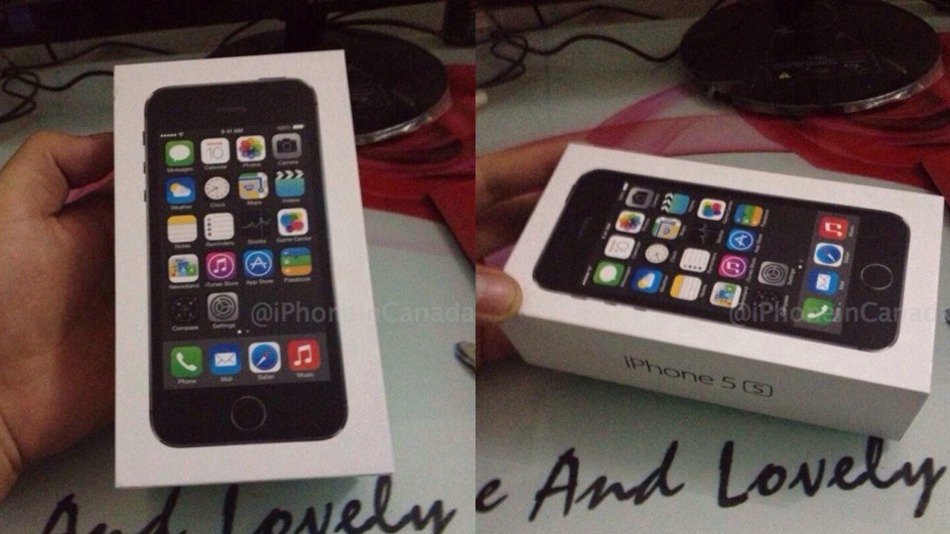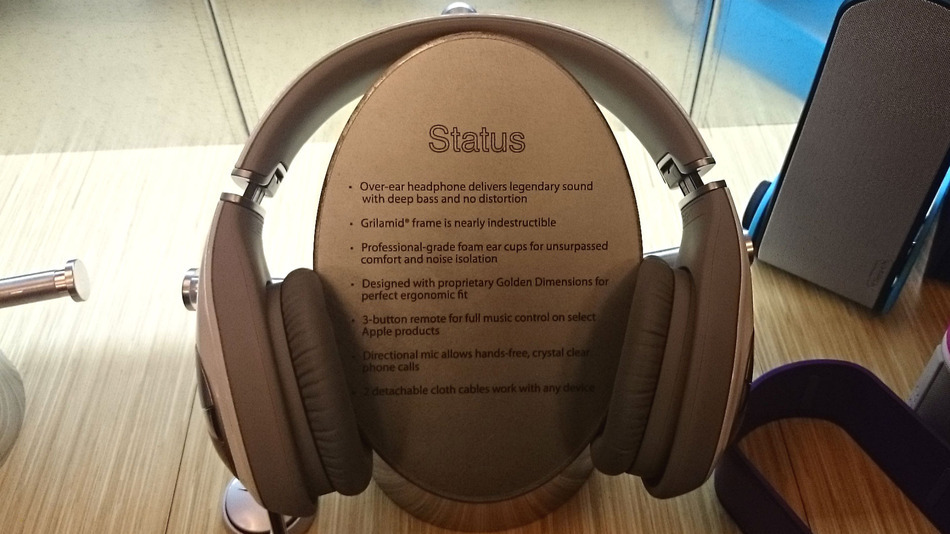| You check your iPhone dozens and dozens of times a day, probably more. Entering a passcode each time just slows you down. But you do it because making sure no one else has access to your iPhone is important. With iPhone 5s, getting into your phone is faster, easier, and even a little futuristic. Introducing Touch ID — a new fingerprint identity sensor. Put your finger on the Home button, and just like that your iPhone unlocks. It’s a convenient and highly secure way to access your phone. Your fingerprint can also approve purchases from iTunes Store, the App Store, and the iBooks Store, so you don’t have to enter your password. And Touch ID is capable of 360-degree readability. Which means no matter what its orientation — portrait, landscape, or anything in between — your iPhone reads your fingerprint and knows who you are. And because Touch ID lets you enroll multiple fingerprints, it knows the people you trust, too. |
With the TouchID fingerprint sensor in the iPhone 5S, Apple could break new ground in consumer electronics by taking biometric technology mainstream. In fact, industry experts agree that other manufacturers will soon follow suit with their own fingerprint scanners.
Built into the home button of the iPhone 5S, the Touch ID system scans the finger of the person pressing the home button. For the owner, the phone unlocks immediately — no lock code necessary. The system can also eliminate the need to enter a password when downloading new apps from the App Store. During the keynote, Apple senior vice president of marketing Phil Schiller explained the fingerprint sensor in detail: "It's a touch-capacitive sensor. It's super-thin — it's 170 microns thin, that's just thicker than a human hair — yet it's very high resolution: 500 pixels per inch. You can turn your finger and read it in any orientation." By building the sensor into the home button, the Touch ID sensor is arguably in the most convenient place possible. To protect the sensor, Apple improved the durability of the button with sapphire crystal, surrounding it with a steel ring that detects the finger. Such convenient design might be a difficult thing for competitors like Samsung, whose phones have physical buttons of irregular shape and size, or BlackBerry, whose new phones don't have a home button. However, the feature is bound to be imitated, industry experts say. "There's no question — since we're working with biometric providers — the other major mobile manufacturers already have products in the queue coming out," says Benjamin Chen, CEO of Arkami, which builds myIDkey, a USB thumb drive secured with biometrics. "Their number one competitor will have the model soon." Chen wouldn't say who that was, but Apple's chief competitor in the smartphone space is generally regarded as Samsung. Image Credits: Mashable Apple unveiled the next-generation iPhone at its headquarters in Cupertino, Calif. on Tuesday. The iPhone 5S — revealed alongside a low-cost iPhone model, the iPhone 5C — keeps the same overall physical design as the previous-generation iPhone 5, but it also has a number of upgrades. Calling it the most "forward-looking" iPhone it's ever launched, Apple equipped the iPhone 5S to run 64-bit apps (all previous models ran at 32 bits) thanks to a new processor: the Apple A7. It packs more than 1 billion transistors into a 102mm chip. Apple has re-engineered all the built-in apps — such as Mail, Calendar and Music — for 64-bit architectures. Apple says the new chip makes the iPhone 5S five times faster than the iPhone 5 and 56 timesfaster than the original iPhone. The A7 chip supports OpenGL 3.0/ES Version 3.0 for console-level 64-bit graphics. The upcoming Infinity Blade III will be one of the first games to take advantage of the upgrade to deliver improved graphics. The iPhone 5S introduces a CoreMotion API for developers — consolidating sensor data from the accelerometer, gyroscope and compass — powered by a co-processor called the M7. Apple says it's "optimized for contextual awareness," such as when the user is in a moving vehicle.
n the run-up to next week’s Apple event, the iPhone 5S rumor mill has become even more active with supposed leaks and mysterious images popping up from all corners of the Internet.
The latest comes from a Chinese tech blog, which posted photos of what looks like a box for the long rumored iPhone 5S. In particular, one feature of the box’s artwork stands out — a silver ring around the normally all-black home button. Originally posted by Ctechcn, Canadian tech site iPhone in Canada later picked up the story, and found clearer images of the box on Chinese microblogging service Weibo. The grainy images appear to fall right in line with hints dropped in recent months about the smartphone’s new fingerprint scanner feature. While the authenticity of the images have not been verified, the ring around the home button shown in the images does match the description given by Fox News reporter Clayton Morris last month on the TWiT podcast. Citing his own, undisclosed sources, Morris said, “From what I’ve understood [the fingerprint scanner is] gonna have a silver ring around it.” Apple did not immediately respond to a request for comment BERLIN — Klipsch unveiled the Status, a noise-isolating, over-the-ear headphones, at the IFAconsumer-electronics fair on Saturday.
Techspectors has seen many headphones at IFA this year, but the Status stands out because it's made out of extremely durable and light material called "Grilamid." Add some memory foam ear cups to the mix, and you get a pair of very comfortable headphones. Klipsch claims that they're lighter than most others in its class. The Status headphones also boast passive noise cancellation. We tried them out with music playing, and they did an admirable job of killing nearly all the sounds from our very noisy environment. The Klipsch Status headphones come in black and white, and include two detachable cables, one of which has a three-button mic and remote compatible with iOS devices. They will be available for $249.99, and are expected to arrive some time this month. It can be tough to keep up with all the new apps released every week. But you're in luck --Techspectors takes care of that for you, creating a roundup each weekend of our favorite new and updated apps.
This week, we found an app that gives you unlimited access to ebooks, and another that tracks your activity to ensure you're moving at least 30 minutes of day. Also on the list: A new app makes it easier to know what's going on in your neighborhood, while another helps you avoid long restaurant lines. Check out the gallery, above, for a peek at this week's highlights. Video credits:Mashable
Motorola's new Droid trio for 2013 — the big-screen Ultra, the battery-packing Maxx and the oh-so-cute Mini — includes an interesting and kind of strange way of sharing photos. Droid Zap is an attempt to make photo sharing mind-bogglingly simple: a single swipe is all you need. I had a little hands-on time with the new Droids, which will be exclusive to Verizon, and the Droid Zap is as convenient as it's made out to be. Even Apple's AirDrop, an iOS 7 feature that allows sharing to iPhone owners close to you via Wi-Fi direct, has more steps than Motorola's new trick. Once Droid Zap is enabled, all you have to do is swipe up on a photo with two fingers. That's it. Done. No names, no email addresses, no social networks necessary. That sounds kind of bizarre, but it's true. What happens after you swipe is that the phone uploads the photo to a kind of temporary cloud (remember, Motorola is owned by Google), which is tied to the phone's location. The photo stays in the cloud for two minutes and then poof, it's gone. Before it disappears, anyone within 300 feet of your phone will get notified that there's a photo available for sharing. Well, anyone with one of the new Droids or running the Droid Zap Android app, which Motorola says will be available when the new phones launch on Aug. 20. |







